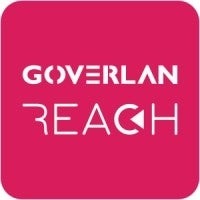Today’s technology enables us to work collaboratively, regardless of physical location and devices. Especially relevant at a time when remote work is prevalent, you may need to access a computer from a different physical location or remote help troubleshooting a computer. Remote desktop and access software can help solve these common work-from-anywhere issues.
Table of Contents
What is Remote Desktop Software?
Remote desktop software makes it possible for a local user to not only access a desktop environment of a remote computer, but also its resources. This type of software was initially meant to remotely resolve technical issues, but its uses have evolved. It allows remote installation of programs and remote desktop access from many types of devices to cater to user needs such as a flexible and collaborative work environment from their devices of choice.
Also read: The Benefits of Virtual Desktop Infrastructure in the WFA Shift
Top Remote Desktop and Access Software
Each of the five remote software and access software products has a unique offering. However, there are some features shared by all of them. They all offer security and authentication features to secure remote devices. Each of them has a sharing tool that allows the transfer of files among devices. They also allow a varying degree of customization of a remote desktop.
| Platform | Visibility into device usage information | Diagnostic information | Application management | Remote wipe | Device management | Device enrollment |
| TeamViewer | ✅ | ✅ | ✅ | ✅ | ✅ | ✅ |
| AnyDesk | ✅ | ❌ | ❌ | ❌ | ❌ | ❌ |
| Zoho Assist | ❌ | ✅ | ❌ | ❌ | ❌ | ❌ |
| LogMeIn | ✅ | ✅ | ✅ | ✅ | ✅ | ✅ |
| Goverlan Reach | ✅ | ✅ | ✅ | ✅ | ✅ | ✅ |
TeamViewer

For both commercial and personal use, TeamViewer is one of the leading remote desktop software products. It has been enabled on over 2 billion devices and achieves up to 45 million devices concurrently online. TeamViewer also has implementations in Augmented Reality (AR) and the Internet of Things (IoT).
Key Differentiators
- Automated mass deployment. Manual deployment issues involve going to every single device to press “accept” during the process. TeamViewer’s proprietary automated mass deployment allows silent deployment of not only modules but full versions to your whole network. On the remote side, no manual action is required of the user.
- Integration with business applications. TeamViewer’s application programming interfaces (APIs) allow integration of TeamViewer into other applications and systems to increase users’ productivity by optimizing processes. Users do not have to keep switching between applications. They can also comfortably work from a single central location.
- Remote access of Android devices. TeamViewer offers remote access for Android devices to allow users to access and support their devices from anywhere. These devices include tablets, smartphones, point of sale (POS) systems, and digital displays, among others. TeamViewer has also partnered with more than 100 top Android original equipment manufacturers (OEMs) to build in remote capabilities and improve their products.
Cons: Compared to alternatives, TeamViewer is costlier. It also has an auto-renewal policy that requires the user to notify TeamViewer 28 days before the end of the initial term. Failure to do so has a user automatically renewed for a term, whether they wish to or not.
AnyDesk

With more than 300 million downloads worldwide, AnyDesk is a popular remote desktop access software provider. AnyDesk boasts a proprietary codec known as DeskRT that eliminates latency regardless of location or limited bandwidth internet connection. Its unique DeskRT offering and flexible pricing ensure that AnyDesk is a fast-growing software product, with about 14 million new users every month.
Key Differentiators
- DeskRT powered performance. DeskRT not only uniquely compresses but transfers image data between computers to ensure users perform tasks without latency. As such, users are able to enjoy a smooth and seamless on-screen experience, with 60 frames per second on local networks and stable internet connections.
- Compatible and lightweight app. At a size of 3MB, AnyDesk is a lightweight application that makes it accessible to more devices, without worrying about storage constraints. AnyDesk is also backward compatible with older operating system versions to further the flexibility of the users’ devices.
- Banking grade security. AnyDesk employs TLS 1.2 technology to protect users from unauthorized access. It also uses RSA 2048 asymmetric key exchange encryption to confirm connections.
Con: AnyDesk’s subscription contract needs to be canceled at least 90 days before the term expiry date.
Zoho Assist

Zoho Assist is a cloud-based remote desktop support and access software platform that uses on-demand remote support sessions to satisfy user needs. Its affordability and flexibility make it appealing to small businesses, particularly useful to IT departments while troubleshooting computers. Zoho Assist is also suitable for businesses offering remote support to their clients.
Key Differentiators
- On-demand remote support. Zoho Assist’s on-demand remote support sessions allow users’ issues to be resolved from a remote location. Since Zoho Assist is completely web-based, no prior installation is required to enjoy remote support sessions.
- Bulk deployment. Zoho Assist’s bulk deployment allows users to increase their efficiency by concurrently deploying an unattended access installer to many remote devices.
- Reboot and reconnect. This allows users to reboot a computer at any given moment during an active session, and reconnect automatically without terminating the session.
- Rebranding. Zoho Assist gives users the tools to improve their brand image by allowing them to customize their portal URL and adding their business name and logo.
Cons: The remote support features and unattended support functionality may be a bit difficult to set up or comprehend for new users. Support may also be frustrating through inconsistency and boilerplate responses that may fail to address the issues of users.
LogMeIn

LogMeIn is remote desktop software that is used by businesses to seamlessly work remotely and improve the efficiency and security of the exchange of data in a workforce. LogMeIn has two key products, namely LogMeIn Pro and LogMeIn Rescue. LogMeIn Pro provides businesses the tools to flexibly and productively maintain their day-to-day operations. On the other hand, LogMeIn Rescue is a remote support solution that assists users to provide technical support to their customers, workforce, or both.
Key Differentiators
- Immersive mobile remote control. LogMeIn’s Android and iOS mobile application is intuitive to offer users an immersive experience. This proves invaluable to users on the go.
- Unlimited remote access. LogMeIn offers unlimited access from the user’s devices and platform of choice. Furthermore, LogMeIn allows an unlimited number of licensed users across all plans.
- Remote wipe. LogMeIn’s remote wipe feature enables users to not only lock down but also encrypt employee devices to maintain the security of devices and data.
Cons: LogMeIn may suffer from lags, stuttering, and freezing. The LogMeIn Client’s failure to respond may be attributed to network latency. Furthermore, LogMeIn Pro allows a small number of managed devices. A single account can only access a few computers.
Goverlan Reach

Goverlan Reach is one of the industry’s most secure on-premises remote access software. It alleviates the pain points of a user’s help desk by bettering the ticket closure rates. Through performance monitoring, IT workflow automation, and offering users secure access, regardless of their location, Goverlan Reach aims to improve the productivity of the user’s help desk.
Key Differentiators
- Screen activity monitoring. Goverlan Reach allows users to view multiple systems simultaneously to identify issues, such as performance, and suspicious activity in real-time.
- Curtain mode. Remote users can activate curtain mode to mask their activity from people physically present at host machines while a session is active. Where restricted information is involved, this feature is particularly useful.
- FastConnect technology. Goverlan Reach allows a user to specify a username or partial user ID to automatically search the directory for full user information. This allows the user to quickly find and connect to a specific machine.
- Configurable user notification modes. Remote users have the flexibility to either notify a local user about an active remote-control session, prompt for their approval, or operate in stealth across sessions.
Con: Less intuitive interface compared to similar software. Navigating the user interface may prove to be a challenge to new users.
Choosing the Best Remote Desktop and Access Software
Before subscribing to any remote desktop and access software, a few considerations have to be made. Firstly, comparing these products against your business requirements. Is your business small scale or medium to large scale? What features are an absolute need for your business? Are the tools offered by remote software for use internally, or are they meant to serve your business’s clients? How much are you willing to spend against the features offered by various enterprise versions of the software? If you seek remote software for personal use, would a paid version or a free plan appeal to you more? These questions should help you gather enough information to isolate your remote software of choice.
Read next: Best Business Continuity Management Software Solutions



